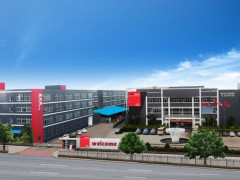
Laser-initiated hydrogen-boron fusion now 'leading contender' for energy source
source:Laser Focus World
release:Nick
keywords: Laser-initiated hydrogen-boron fusion
Time:2017-12-29

Schematic of a hydrogen-boron fusion reactor. (Image: University of New South Wales)
A laser-driven technique for creating fusion that dispenses with the need for radioactive fuel elements and leaves no toxic radioactive waste is now within reach, say researchers. Dramatic advances in lasers that produce peak powers at the petawatt level are making it viable for scientists to pursue what was once thought impossible: creating fusion energy based on hydrogen-boron reactions. And an Australian physicist is in the lead, armed with a patented design and working with international collaborators on the remaining scientific challenges.
In a paper in the scientific journal Laser and Particle Beams,1 lead author Heinrich Hora from the University of New South Wales in Sydney and international colleagues argue that the path to hydrogen-boron fusion is now viable, and may be closer to realisation than other approaches, such as the deuterium-tritium fusion approach being pursued by U.S. National Ignition Facility (NIF) and the International Thermonuclear Experimental Reactor (ITER) under construction in France.
"I think this puts our approach ahead of all other fusion energy technologies," says Hora, who predicted in the 1970s that fusing hydrogen and boron might be possible without the need for thermal equilibrium. Rather than heat fuel to the temperature of the Sun using massive, high-strength magnets to control superhot plasmas inside a doughnut-shaped toroidal chamber (as in ITER), hydrogen-boron fusion is achieved using two powerful lasers in rapid bursts, which apply precise nonlinear forces to compress the nuclei together.
Direct electricity
Hydrogen-boron fusion produces no neutrons and, therefore, no radioactivity in its primary reaction. And unlike most other sources of power production, like coal, gas and nuclear, which rely on heating liquids like water to drive turbines, the energy generated by hydrogen-boron fusion converts directly into electricity. But the downside has always been that this needs much higher temperatures and densities - almost 3 x 109 °C.
However, a spate of recent experiments around the world indicate that an "avalanche" fusion reaction could be triggered in the trillionth-of-a-second blast from a petawatt-scale laser pulse. If scientists could exploit this avalanche, Hora said, a breakthrough in proton-boron fusion was imminent.
"It is a most exciting thing to see these reactions confirmed in recent experiments and simulations," says Hora. "Not just because it proves some of my earlier theoretical work, but they have also measured the laser-initiated chain reaction to create one-billionfold higher energy output than predicted under thermal-equilibrium conditions."
Together with 10 colleagues in six nations, including from Israel's Soreq Nuclear Research Centre and the University of California, Berkeley, Hora describes a roadmap for the development of hydrogen-boron fusion based on his design, bringing together recent breakthroughs and detailing what further research is needed to make the reactor a reality.
An Australian spin-off company, HB11 Energy, holds the patents for Hora's process. "If the next few years of research don't uncover any major engineering hurdles, we could have prototype reactor within a decade," says Warren McKenzie, managing director of HB11. "From an engineering perspective, our approach will be a much simpler project because the fuels and waste are safe, the reactor won't need a heat exchanger and steam turbine generator, and the lasers we need can be bought off the shelf."
Other researchers involved in the study were Shalom Eliezer of Israel's Soreq Nuclear Research Centre; Jose M. Martinez-Val from Spain's Polytechnique University in Madrid; Noaz Nissim from University of California, Berkeley; Jiaxiang Wang of East China Normal University; Paraskevas Lalousis of Greece's Institute of Electronic Structure and Laser; and George Miley at the University of Illinois, Urbana.
Source: https://newsroom.unsw.edu.au/news/science-tech/laser-boron-fusion-now-‘leading-contender’-energy
REFERENCE:
1. H. Hora et al., Laser and Particle Beams (2017); https://doi.org/10.1017/S0263034617000799.
- RoboSense is to Produce the First Chinese Multi-beam LiDAR
- China is to Accelerate the Development of Laser Hardening Application
- Han’s Laser Buys Canadian Fiber Specialist CorActive
- SPI Lasers continues it expansion in China, appointing a dedicated Sales Director
- Laser Coating Removal Robot for Aircraft
 FISBA exhibits Customized Solutions for Minimally Invasive Medical Endoscopic Devices at COMPAMED in
FISBA exhibits Customized Solutions for Minimally Invasive Medical Endoscopic Devices at COMPAMED in New Active Alignment System for the Coupling of Photonic Structures to Fiber Arrays
New Active Alignment System for the Coupling of Photonic Structures to Fiber Arrays A new industrial compression module by Amplitude
A new industrial compression module by Amplitude Menhir Photonics Introduces the MENHIR-1550 The Industry's First Turnkey Femtosecond Laser of
Menhir Photonics Introduces the MENHIR-1550 The Industry's First Turnkey Femtosecond Laser of Shenzhen DNE Laser introduced new generation D-FAST cutting machine (12000 W)
more>>
Shenzhen DNE Laser introduced new generation D-FAST cutting machine (12000 W)
more>>
